Archive for September, 2010
A Pumpkin’s Story
If you’ve read this blog for long you know of my love – nay – lust for fall. The weather, the colors, the food; smoke curling up from chimneys; apples begging to be picked and made into cider or pies or cakes. And, my appreciation for the old fashioned fall holidays – Halloween and Thanksgiving. I love it all.
But one thing you may not know is my (I’m almost embarrassed to say) dismal success at growing pumpkins. Maybe I should say lack of growing pumpkins. Oh, it’s not for lack of trying though. Each spring I carefully plant my seeds in peat pots. Baby Boo, Field, Sugar, Big Max, you name it and we have planted it. I water them faithfully and within a few weeks to a month I gingerly plant them out in the garden where everything seems to, invariably, go wrong.
Last year, sadly enough, the two pumpkins we did harvest were not even planted by us. Birds had dropped seeds near the sheep pen. When they began to grow Brianne would dump water on them while cleaning out water buckets and troughs…not the tips that I read about on the internet or got from growers. When we realized the vines were pumpkins we guarded them as steadfastly as the Secret Service guards the President. As those long sought for orbs grew, we protected them with cages made of chicken wire and wood. Nothing was going to prevent us from picking those two of our favorite crops. But, even with the surprise of volunteer pumpkins, my shame still remains, folks. I love pumpkins, but I can’t grow them.
Until Now!!!
We planted three hills of Cinderella pumpkins in May. And I’m proud to report that ALL three survived and have produced little green globes that will be screaming fall in another month as they turn to a luscious burnt orange color. None of them are overly huge. And, they aren’t really the kind for making into jack-o-lanterns or pies, but they are of respectable size for tabletop decorations or front door displays. When the season is over, we will gut our beloved pumpkins and save the seeds for in hopes of having even more next year.
It’s not the truck load I had envisioned, but it’s something. Our first real homegrown pumpkin. It’s a start, right?
![]() photo credit: beautifulcataya
photo credit: beautifulcataya
Fall Begins
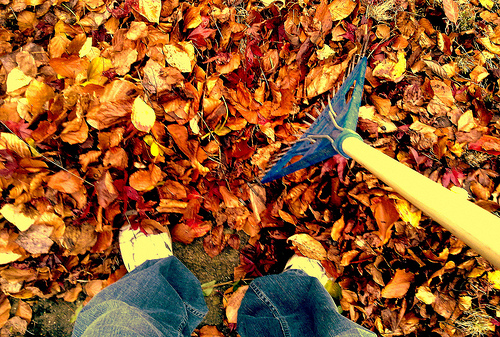
This morning was dark and chilly, and the fog hung low over the farm like a vale. The temperature was in the low 40’s here. It was the first morning that I needed layers of thermals and sweatshirts and warm gloves to do the morning chores. It was the coldest morning so far, and when I exhaled my breath swirled up into the dim morning light like smoke out of a chimney.
Brianne is on a senior class retreat up in the mountains, so feeding falls to me. I scooped out grain for the lambs; it made a loud crashing noise in the quiet morning as it hit the metal feeder. The hens were already cackling to be let out, but not this day. I threw hay to the lambs and gave a bit to the rabbit. Dutch ran from barn to corral and back again, trying to keep up. He’s always with me when I’m outside.
I spent a few minutes in the barn just watching the chickens scratch the ground and the lambs vie for the best feeder space. I smiled as if I had won the lottery. I could smell the damp compost and freshly turned earth as I walked the farm in the cold mist. Mornings like these are like being in heaven (I think). When all were fed I went inside to fix a pot of tea. I was greeted by the faint scent of the pumpkin spice bread I made last night. Hot tea and warm bread oozing with butter, can morning get any better?
The fog will not last today, but the season will go on.
Yesterday was the Autumnal Equinox, but today is the first day of fall. I am a happy farmgirl!
Pumpkin Spice Bread
½ cup butter, room temp
1 cup light brown sugar
2 eggs, fresh
1-1/2 cups all purpose flour
1 tsp baking soda
1 tsp salt
1 tsp pumpkin pie spice
1 cup pumpkin puree
½ cup apple sauce
½ cup pecans, chopped
Preheat oven to 350.
Cream butter, sugar and eggs.
Sift the dry ingredients and combine with butter mixture. Mix well, but don’t over mix. Add pumpkin and apple sauce; stir well. Stir in nuts and pour into a buttered loaf pan. Bake 1 hour or until toothpick inserted comes out clean. Turn onto rack to cool.
![]() photo credit: kardboard604
photo credit: kardboard604
Fall Garlic
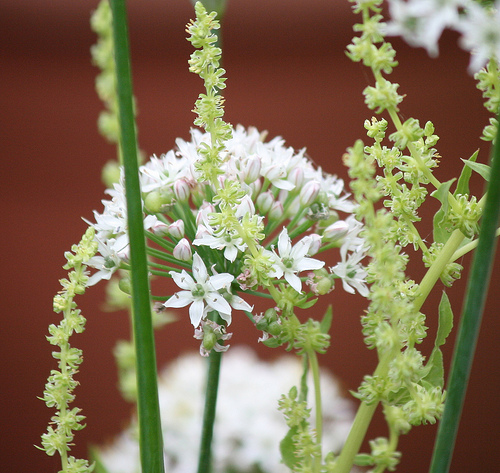
I just love September on our homestead. One foot is still in summer while the other one steps towards fall. It is a time when the garden starts to slow. Even in our temperate winters only a few things can be planted. Garlic is one of them, my favorite cooking herb. It can be planted in October after most other garden chores are finished for the year. All winter long it waits in the ground for spring. Tiny new roots are sent down; some clinging to the frozen soil of colder areas. By early spring it will be poking its head through layers of mulch reaching for the sun. If you’d like to try your hand at growing garlic, now is a good time to order seed garlic.
There are over 300 varieties of garlic grown world wide, divided into two categories – soft neck and hard neck. Everyone has their preferences and lots of people enjoy growing new varieties to find new favorites.
Garlic is native to Central Asia and dates back to 4000 BC. It is part of the lily family. Ancient Egyptians worshiped garlic and would place clay models of the herb in the tombs of deceased family members. Garlic was so highly regarded in ancient times that it was even used as currency. And, lastly, garlic was well known for its aphrodisiac qualities, which have been celebrated through the ages in literature, recipes, and medical journals.
Until the 1940’s however, garlic was unacceptable in most of American society, having been dubbed the “stinking rose”. For centuries garlic has been considered an herbal wonder drug. It was used by monks of the middle ages to treat the cold and common flu.
During WWII garlic poultices were used on wounds as an inexpensive and effective replacement for antibiotics.
Garlic has many medicinal qualities too. When crushed, garlic has been shown to kill 23 types of bacteria, including salmonella and staphylococcus. It has also been shown to lower cholesterol by preventing clotting in the arteries. And, the A, B, and C vitamins in garlic help stimulate the body to fight carcinogens.
For a great “how-to” guide on growing garlic check out this article by Adam Steiner
![]() photo credit: Fluffymuppet
photo credit: Fluffymuppet
Eazy Peezy Cucumber Pickles and Pickled Beets
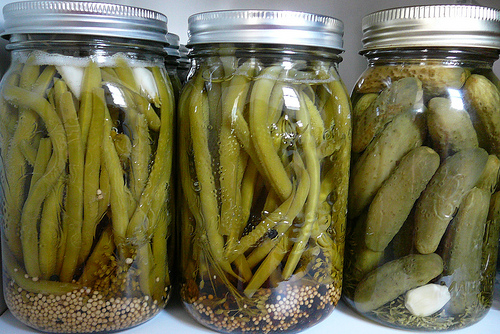
Love pickles, but don’t have time for the pickle process? Try this easy recipe for fresh homemade pickles any time.
Simply thinly slice cucumbers and stack in a wide mouth canning jar. Pour rice vinegar, rice wine vinegar or white wine vinegar over the slices until cucumbers are just submerged. Cover and refrigerate for a day. Then enjoy. These easy pickles will increase in tanginess as time goes on.
Add fresh cucumbers as needed and cover with additional vinegar. For more flare, try adding your favorite seasoning like dill, garlic or hot chilies. Another great option is to use half vinegar and half sesame oil, and sprinkle with toasted sesame seeds.
For fast pickled beets, boil beets until done. Cool and slip off skins. Slice or quarter and place into container. Combine equal parts sugar and vinegar in a small saucepan and cook slowly until sugar is dissolved. Cool slightly and pour over beets. Refrigerate over night. Enjoy in salads or by themselves!
![]() photo credit: paige_eliz
photo credit: paige_eliz
Who’s Really Responsible for Food Safety?
Food poisoning has a huge impact on our country, costing American’s thousands in dollars and in lives each year. But, how much do people really know about safe food handling?
NSF International finds that consumers display inconsistent food safety behaviors and that Americans need more food safety education at home.
To read more about NSF’s recent survey on consumer food handling practices and knowledge click here.
Frugal Housekeeping Tips
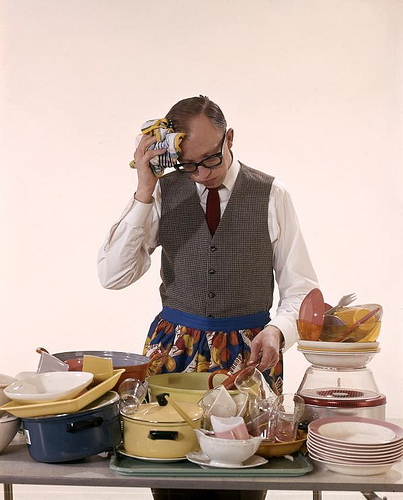
Are you beginning to notice how so much of what we use to run our homes is inter-connected? The way in which we wash dishes affects our water and heating; electrical or gas usage. And, windows, doors, and insulation have a direct connection to the cost of heating and cooling our homes. But, what about keeping your home clean? What tricks and tips can you use to lower the cost of keeping your home squeaky clean?
It’s simple. Take a clue from the women of old and use natural, basic and inexpensive supplies for keeping your home clean and fresh. Newspapers or cotton t-shirts, cut to size, make great towels for washing windows. T-shirts, old cotton socks or cotton diapers can be used as dusting cloths, while threadbare towels make good cleaning rags. Keep a box close by to collect and store these items as they come available.
To get started gather up a few ½-gallon or gallon jugs, spray bottles, cheese grater, measuring cups, bowls and spoons for mixing, and labels. You’ll want to keep these items separate from other kitchen utensils so try to find a nice box or bin to store them in. Thrift stores are a great place to find these items inexpensively.
Many of the ingredients needed may already be in your home, like baking soda, distilled water, white or cider vinegar, salt, lemon juice, olive oil and essential oils, but if they are not, they can be purchased at most stores. You’ll also want to add Borax laundry booster, washing soda, Castile soap (liquid and bar), ammonia and these essential oils; lavender for repelling insects, tea tree for an antibacterial and fungicide; and lemon, orange or tangerine for grease cutters.
Laundry detergents are probably one of the most expensive items we buy for cleaning. But, did you know that in powder form almost 75% of the detergents contents is chalk? And more than half of the liquid brands are water. In fact, most cleaning supplies are mostly additives to fill the packaging. But, with just a few ingredients and a few minutes of your time you could be making your own supplies and saving bundles. Here are a few recipes to get you started. Read the rest of the story »
Frugal Living – Saving On Electricity
Electrifying Ideas to Control Your Use of Electricity

To save on electricity, pay close attention to the biggest users. You’ll save more electricity (and money) by dealing with the biggest electricity-guzzlers first rather than worrying about whether it’s better to boil a cup of water on an electric burner or in a microwave. With that in mind, concentrate on your BIG energy users, which are:
Heating, Air Conditioning, Lighting, Washers, Dryers, Refrigerator, Water Heater
As we mentioned earlier, raising or lowering the thermostat will go a long way to reducing your electric bill. So, let’s look at the rest of the list.
Lighting: For appliances or electronics that are close together, plug them into a power strip. That way you can turn them all off at once when not in use.
For areas, like stairways or dark hallways, where you want a light on all the time use lower wattage bulbs. A 15-watt bulb can reduce electricity by 80% over a 75-watt bulb.
Place lamps in corners where their light can bounce off the walls and be more effective.
And, of course, use energy-efficient compact fluorescent light (CFL) bulbs when ever possible.
Washers: To save on water and electricity run only full loads of dishes and let them air dry. The same holds true for laundry. Wash only full loads and dry using a clothesline.
Washing in cold water and using a cold water detergent will also save on the cost of heating water.
Clothes Dryer: If clotheslines are not your thing or if they are not allowed in your area use the moisture sensor option so the dryer turns off automatically when clothes are dry.
Make sure that dryer loads are not too small or too big for the dryer capacity. And, remember to empty the lint trap after each load. This will help the dryer to work more efficiently.
Refrigerator/Freezer: Routinely vacuum condenser coils. Dirty coils affect the efficiency of the compressor which translates to increased electric cost.
Do not place uncovered liquids in refrigerators. Not only do they absorb undesirable flavors, liquids give off vapors that add to the compressors workload.
Additional freezers or refrigerators should be kept in the house or basement when ever possible, not the garage. The fluctuations in winter and summer temperatures make these appliances work harder which in turn uses more energy.
Water Heater: You can reduce your water heating bill by 10% by lowering the water heater temperature from 140°F to 120F°. (Keep the temperature at 140°F if you use an older dishwasher though. This helps sanitize the dishes)
Once a year, drain a bucket of water from the bottom of the water heater tank. This gets rid of sediment, which can waste energy by “blocking” the water in the tank from the heating element.
Insulating your hot water supply pipes will reduce heat loss. (Hardware stores sell pipe insulation kits.)
For older water heaters, consider buying a water heater insulation kit, which reduces the amount of heat lost through the walls of the tank.
Click here for more energy savings tips.
![]() photo credit: bigandyherd
photo credit: bigandyherd
Longing for Fall
It was barely dawn when I woke to a cool breeze floating through my window. A thin glimmer of light shone just over the horizon. Rather than roll over and sleep some more I got up, put on my jeans and a long sleeved shirt. Our weather is still warm during the day, but the mornings are brisk. I quietly left the house and walked around our little homestead. I love this time of morning, before the farm and the world has decided to rise and get on with their day.
When Dutch and Dakota finally realized I was outside they came running over to me, tails wagging wildly. They were still droopy eyed. Wondering what I was doing out so early, but loving the pre-dawn attention. I bent over and rubbed them vigorously and chuckled as they flopped on their backs begging for a belly rub. I am happy to have such contented farm dogs. They moaned and grinned and begged for more.
When Brianne came out I joined her in her morning routine of scooping grain and throwing hay to the lambs, and feeding the chickens. The baby chicks, now a good month old, have been moved to a spare rabbit hutch to get acquainted with barn life and life outside the brooder. No more do they have the warmth of their heat lamp, but a thickly packed nesting box seems to suit them just fine. Oreo (the rabbit) got his water bottle refilled and a fresh supply of pellets. We still have lambs left over from the state fair and our county fair. Fortunately they have all been sold. Now we wait for the butcher to have room in his locker before we can take them in. Not an ideal situation – waiting – but I know when our turn comes he will treat us right. Our county fair is just a few weeks gone, but it seems like a lifetime ago. Strange how we roll from one event to another with barely a look behind.
September has always marked the beginning of fall for me. I’ve been pining for it, longing for it since July, but it’s still a few weeks off. Fall is my time folks, when golden leaves float down from the sycamore tree in front of my house; when the fragrant smells of hearty stews fill the kitchen; and, when the pumpkins we planted back in spring start to change their color from green to brilliant burnt orange.
No – it’s not yet time, but soon. September paves the way for our hallowed fall. This is my time folks. I can’t wait.
Frugal Living – Tips and Hints for Conserving Water
Water is one of our most precious resources. It is also one that is not so easily renewed. Lack of rainfall and low snow pack; the loss of ground water, drying up of reservoirs, polluted streams, rivers and lakes have all made us keenly aware of how difficult our lives could be without water.
But – every day we can do something to reduce the amount of water we use AND recycle the water we must use. Our efforts might seem small, but every drop counts over the course of our life.
At my house water savings starts with bathing. Brianne and I both take five minute baths or showers. A kitchen timer, in the shape of a chicken, sits on the bathroom counter. As soon as the water is turned on the timer is set. It’s amazing how full a tub gets with only 5 minutes worth of water. Try it. I think you’ll be amazed too.
Laundry is another big water user. But, I devised a way to reuse wash water on my trees and shrubs. I took a 33-gallon square trash can and fitted it with a coupling that has a gasket on both sides to prevent leaks. On the outside portion I screwed on a hose fitting that could be turned on and off. To that I hooked up my hose. I then removed the washing machines drain hose from the drain pipe and attached it to the trash can so the water now drains into the trash can and out the bottom through the coupling to the hose. With each load I can move the hose from tree to tree, or shrub to shrub. One caution though – washing machine gray water should not be used where the water may come into direct contact with vegetables or fruits.
Collected rain water can be used to offset water needs in flower beds and garden plots. The system doesn’t have to be sophisticated. A simple barrel or trashcan under a roof line where rain water pours off will work. You’ll be surprised at how quickly the barrel fills. If you have rain gutters, you can set up a more elaborate collection system that can be piped to different areas of your yard. Even barns, chicken coops and other out buildings will produce a good amount of water during the rainy season. Remember – every little bit helps! Read the rest of the story »
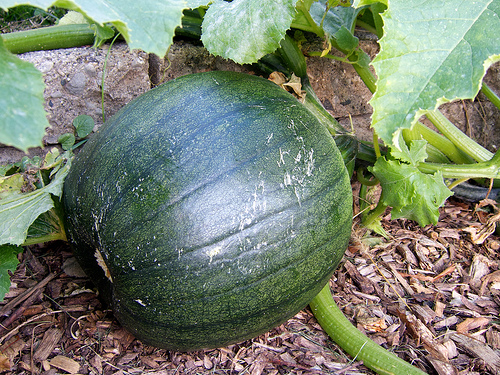
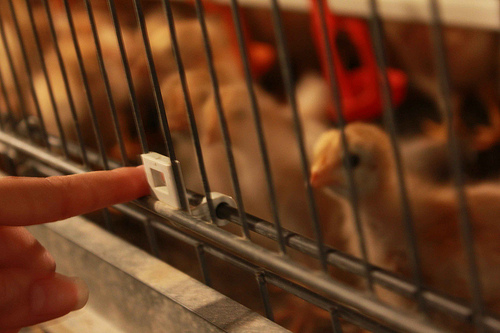
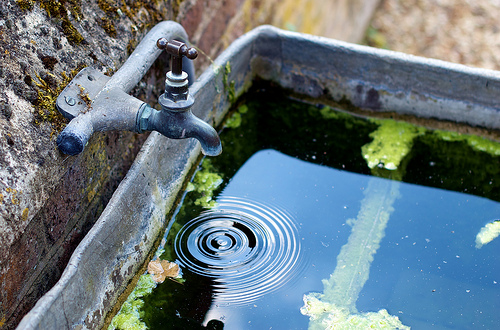
Recent comments
Aenean nonummy hendrerit mauris. Phasellus porta.